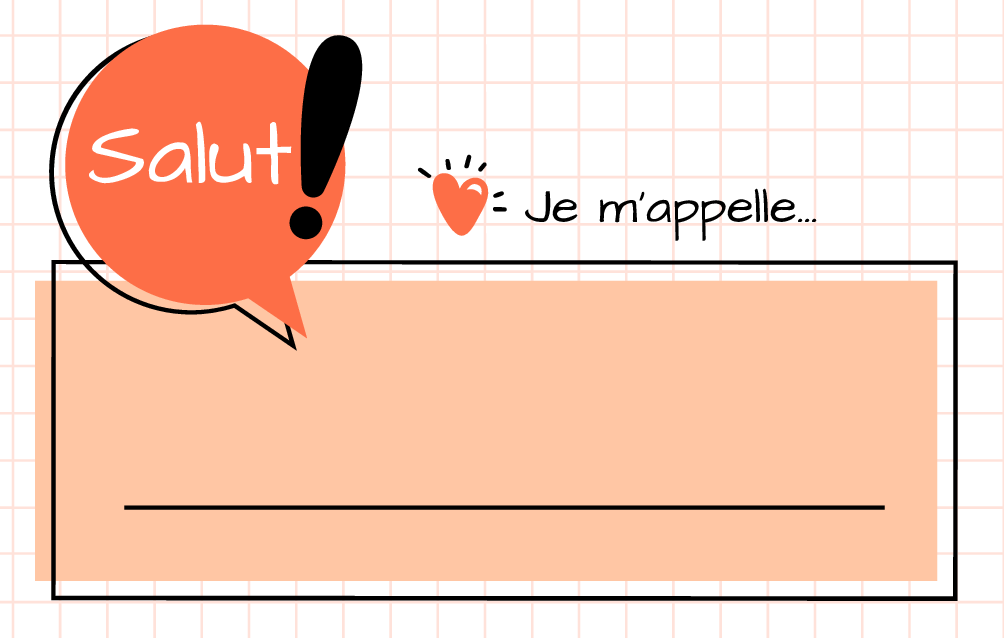- Si vous pouviez déménager dans un pays francophone, lequel serait-il ? La France ? Le Sénégal? La Martinique ? Le Maroc ? (If you could move to a francophone country, which one would it be?)
🧔♀️French Level 1, Activity 03: Les caractéristiques / Characteristics (Online)
Products: Stereotypes, generalizations, identifying characteristics
Practices: Used to make friends and engage in lighthearted conversations
Perspectives: Stereotypes noted by the French can be a way for them to make fun of/mock themselves (e.g. always being on strike, drinking wine and smoking cigarettes). These stereotypes are heavily influenced by regional cultures and often reinforced through international media.
- What can we do, as foreigners, to separate stereotypes of a culture from their reality? In other words, how can we look past stereotypes and generalizations to better understand cultures different than our own?
NCSSFL-ACTFL World-Readiness Standards:
- Standard 1.1: Students engage in conversations or correspondence in French to provide and obtain information, express feelings and emotions, and exchange opinions.
- Standard 1.2: Students understand and interpret spoken and written French on a variety of topics.
- Standard 2.1: Students demonstrate an understanding of the relationship between the practices and perspectives of the cultures of the francophone world.
- Standard 4.2: Students demonstrate understanding of the concept of culture through comparisons of francophone cultures and their own.
Idaho State Content Standards:
- COMM 1.1: Interact and negotiate meaning (spoken, signed, written conversation) to share information, reactions, feelings, and opinions.
- COMM 2.1: Understand, interpret, and analyze what is heard, read, or viewed on a variety of topics.
- CLTR 1.1: Analyze the cultural practices/patterns of behavior accepted as the societal norm in the target culture.
- CLTR 1.2: Explain the relationship between cultural practices/behaviors and the perspectives that represent the target culture’s view of the world.
- COMP 1.1: Observe formal and informal forms of language.
NCSSFL-ACTFL Can-Do Statements:
- I can recognize basic cultural differences.
- I can describe myself and someone that I know (Relationship, nationality, characteristics).
- I can respond to basic questions about my background.
Materials Needed:
Warm-up
1. Begin by introducing the Can-Dos for today’s activity.
2. Play a few minutes of the video, “Cliché” (make sure to turn on the subtitles).
3. After, ask students which stereotypes they have heard or believed:
Quels sont les stéréotypes que vous avez entendus des Français ? Est-ce qu’il y a des stéréotypes que vous croyiez ? Pensez-vous que les Français ont des stéréotypes des Américains ? Lesquels ?
4. Make sure to explain that although some of these stereotypes do exist, rarely do we find individuals who fit all aspects. France is very multicultural and has habitants from all over:
Bien que certains de ces stéréotypes existent, nous trouvons rarement des personnes qui correspondent à tous les aspects. La France est un pays très multiculturelle et compte des habitants de partout.
L’Algérie: 702,000
Le Maroc: 645,000
L’Afrique sub-saharienne: 644,000
Main Activity
1. First, have students practice going around describing themselves using phrases such as:
Premièrement, les étudiants doivent pratiquer comment se décrire:
- Comment t’appelles-tu ?
- Vous êtes/tu es américain(e) ?
- Je m’appelle (nom)
- Je suis américain(e)/ canadien(ne)/ anglais(e)/ italien(ne), etc.
- Je suis d’origine américaine/ algérienne/ sénégalaise/ irlandaise/ française, etc.
- Je suis étudiant(e)/ copain/ copine/ soeur/ frère/ fille/ fils, etc.
2. Next, have students choose a person they know. This could be a roommate, parent, partner, etc. (if they want, have them show a picture to the rest of the group)
Ensuite, les étudiants devront choisir une personne qu’ils connaissent, il peut s’agir d’un colocataire, un parent, un partenaire, etc. (s’ils le désirent, ils peuvent montrer une photo au reste du groupe)
3. Ask them who this person is using phrases like:
Demandez-leur qui est cette personne en utilisant les phrases:
- Il (elle) s’appelle comment ?
- Comment est-il (elle) ?
4. Have them practice using phrases to describe this person such as:
Les étudiants doivent pratiquer à utiliser les phrases ci-dessous afin de décrire des personnes:
- (Nom) est mon/ma colocataire/ mère/ père/ soeur/ copain/ copine, etc.
- Il/elle est américain(e)…
- Il/elle est poli(e)/ réservé(e)/ intelligent(e)/ élégant(e)/ sociable/ gentil(le)/ méchant(e), etc.
- Il/elle aime/ il/elle n’aime pas…
Wrap-up
Ask the following question(s) to finish the activity:
CULTURAL Resources
A video where French people discuss stereotypes that other countries have about France!
End of Activity:
- Can-Do statement check-in… “Where are we?”
- Read can-do statements and have students evaluate their confidence with cards.
- Encourage students to be honest in their self evaluation
- Pay attention and use feedback for future activities!
NCSSFL-ACTFL Can-Do Statements:
- I can recognize basic cultural differences.
- I can describe myself and someone that I know (Relationship, nationality, characteristics).
- I can respond to basic questions about my background.
How to Remix a Pathways Project Activity
Feeling creative? The Pathways Project needs your help in remixing activities for the K-12 classroom.
Try taking an activity to the next level by:
- Add new content (something you’ve created or another OER source)
- Contribute additional activity suggestions
- Integrate authentic materials such as videos, infographics, photos, etc.
- Suggest how to implement the activity in the classroom
- Customize the content for a specific audience or group of learners (for example, K-5 learners or to differentiate for student’s needs)
We want to make it easy to share back with the larger Pathways Project Community! Simply, click this link to remix this activity.
Please consider sharing your remixed activity with us by emailing the activity link to Pathwaysproject@boisestate.edu so that Pathways continues to grow!


